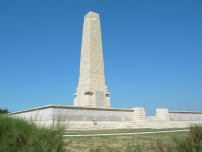| First Name: | William George | Last Name: | LINGARD | |
|---|---|---|---|---|
| Date of Death: | 28/06/1915 | Lived/Born In: | Westminster | |
| Rank: | Private | Unit: | Hampshire2 | |
| Memorial Site: | Helles Memorial, Gallipoli | |||
Current Information:Enlisted-Stratford Gallipoli 1915 On 25 April, British, Australian and New Zealand forces landed on the Gallipoli peninsula hoping for a quick campaign that would knock Turkey out of the war. But it was not to be. The Turks fought bravely, the terrain was a maze of ravines and very soon the stalemate of trench warfare had set in. Add to this the summer heat, water shortages, dead bodies lying around and millions of flies and the place took on nightmarish proportions. By January 1916, all British, French, Indian, Australian and New Zealand forces had left Gallipoli, leaving only behind the dead, over 56,000 of them. The Action of Gully Ravine-28th June 1915 The Second Battle of Krithia, fought between the 6th and 8th May, 1915 failed because both flanks of the attack were unable to gain ground and the Turks were then able to direct their fire on the centre from these positions. So, it was decided that before a new offensive was launched both flanks should be advanced and on 21st June, 1915, the French managed successfully to do this on the right when they bombarded and captured the crest of the Kereves Spur. On 28th June it was the turn of the British to do likewise on the left flank. The attack along Gully Spur by 29th Division at first went well but the further they progressed the greater became the Turkish resistance until the attack finally ground to a halt. Further desperate, almost suicidal attacks by the Turks over the next two days failed to dislodge the British and resulted only in enormous casualties among their ranks. However the advance made by 156 Brigade of the recently arrived 52nd Division, along Fir Tree Spur on the other Side of Gully Ravine was a disaster. The bombardment of the Turkish positions had been virtually non-existent and the assaulting troops met concentrated machine gun fire and suffered enormous losses. By the end of the day the survivors were back in their original trenches. On 28th June, 1915, 88 Brigade of 29th Division supported the unsuccessful attack made by 52nd Division along Fir Tree Spur. In the evening the 2nd Hampshire battalion were sent forward to take over the western end of H12 Trench which was congested with the dead and wounded of 52nd Division. At midnight they repulsed a Turkish counter attack and then spent the next six days clearing up the trenches and digging new ones under heavy Turkish fire. One of their casualties was William Lingard who was killed in action on 28th June. |
||||
| « Back to Search Results | ||||
| If you think any of the information shown here is incorrect, Click Here to submit your amends and comments | ||||




